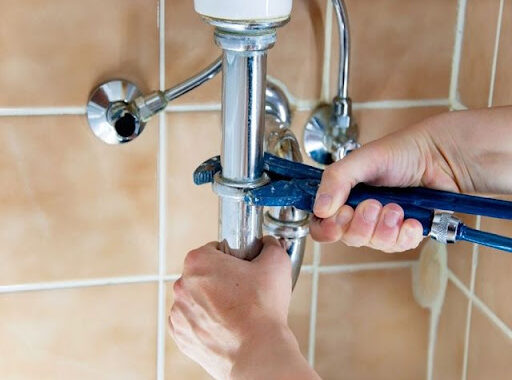Medical Alert and Smart Home Integration

In an age where technology is advancing rapidly, the integration of medical alert systems with smart home technology has revolutionized personal safety and healthcare management. For seniors, individuals with disabilities, or anyone with health concerns, having a seamless connection between medical alert devices and a smart home ecosystem can provide greater security, independence, and peace of mind. This article explores how these two technological domains are merging, the benefits they offer, and how to set up an integrated system.
The Evolution of Medical Alert Systems
Medical alert systems have been around for decades, initially designed as simple emergency call buttons worn as pendants or wristbands. These devices provided a direct connection to emergency services, offering users a crucial lifeline in case of a fall, medical emergency, or distressing situation.
Over time, these systems evolved with technological advancements, integrating features such as fall detection, GPS tracking, and two-way communication. Today, the integration of medical alert systems with smart home technology takes this innovation a step further, enabling users to live safely with even more automation and remote monitoring capabilities.
The Role of Smart Home Technology
Smart home technology encompasses a wide range of devices that automate and enhance daily living. These include smart speakers (e.g., Amazon Echo, Google Nest), smart thermostats, security cameras, motion sensors, and automated lighting. When linked with a medical alert system, these devices can create a more responsive and secure environment tailored to an individual’s needs.
Benefits of Integrating Medical Alerts with Smart Homes
1. Enhanced Emergency Response
When a medical alert system is connected to smart home devices, emergency situations can be managed more effectively. For instance:
- If a fall is detected, smart lights can turn on automatically to illuminate the area.
- Smart locks can be remotely unlocked by caregivers or emergency responders to provide quick access to the home.
- Security cameras can send live footage to family members or medical professionals to assess the situation.
2. Improved Daily Living Assistance
For individuals with mobility issues or chronic conditions, smart home automation can ease daily tasks:
- Voice-controlled assistants can help users call for medical assistance hands-free.
- Smart dispensers can remind and administer medication at scheduled times.
- Smart thermostats can regulate room temperatures to ensure comfort and well-being.
3. Remote Monitoring for Caregivers
Family members and caregivers can monitor loved ones remotely through mobile applications:
- Motion sensors can detect inactivity, which may indicate a health issue.
- Wearable medical alert devices can send real-time location updates via GPS.
- Notifications and alerts can be sent if there are deviations in normal patterns, such as missing a meal or medication dose.
4. Increased Independence and Peace of Mind
One of the primary advantages of integrating medical alerts with smart home technology is the enhanced independence it offers users. Seniors and those with disabilities can continue living in their own homes confidently, knowing help is always accessible. Likewise, family members can have peace of mind knowing their loved ones are safe and connected to emergency assistance when needed. Dentaltown has also explored how smart technology enhances healthcare and personal safety, emphasizing its role in improving quality of life.
Key Components of an Integrated System
1. Medical Alert Devices
- Wearable emergency buttons
- Fall detection sensors
- GPS tracking-enabled devices
- Two-way communication systems
2. Smart Home Hubs and Assistants
- Amazon Alexa
- Google Assistant
- Apple HomeKit
3. Smart Security and Monitoring
- Smart locks for remote access control
- Indoor and outdoor security cameras
- Smart doorbells with two-way communication
4. Health and Wellness Technology
- Smart medication dispensers
- Sleep and activity trackers
- Smart lighting and temperature controls

How to Set Up Medical Alert and Smart Home Integration
Step 1: Choose a Compatible Medical Alert System
Ensure that the medical alert provider offers integration options with smart home devices or allows for third-party API connections.
Step 2: Select a Smart Home Ecosystem
Choose an ecosystem (Amazon, Google, or Apple) that best fits the user’s needs and is compatible with the medical alert system.
Step 3: Connect and Automate Smart Devices
- Link the medical alert system to a voice assistant for hands-free emergency calls.
- Set up smart locks to grant access to emergency responders.
- Integrate motion sensors and cameras for real-time monitoring.
Step 4: Test and Customize Settings
Regularly test the system to ensure it functions correctly, and customize automation settings to align with the user’s daily routine.
Step 5: Educate Users and Caregivers
Make sure users and their caregivers understand how to operate the system and know what actions to take in different scenarios.
Future Trends in Medical Alert and Smart Home Integration
As technology continues to advance, we can expect even more sophisticated integrations, such as:
- AI-Powered Health Monitoring: Predictive analytics to detect potential health risks before they become emergencies.
- Wearable Biometric Sensors: Continuous monitoring of vital signs like heart rate, blood pressure, and oxygen levels.
- 5G Connectivity: Faster and more reliable connections for real-time data transmission and improved emergency response times.
- Smart Home Robots: AI-driven assistants to provide companionship and assist with daily tasks.
Conclusion
The integration of medical alert systems with smart home technology is transforming the way individuals manage their health and safety. With improved emergency response, enhanced daily living, remote monitoring, and increased independence, this combination is a game-changer for those looking to age in place or maintain autonomy despite health challenges. As innovations continue, we can anticipate even more life-changing advancements in personal safety and home automation.
By investing in an integrated system, users can enjoy not only a safer environment but also the confidence and freedom to live life on their terms.


 Cookies in Online Advertising
Cookies in Online Advertising  Top 5 Plumbing Myths Debunked
Top 5 Plumbing Myths Debunked  Data Storage Reliability and Durability
Data Storage Reliability and Durability  How Personal Injury Lawyers Assess
How Personal Injury Lawyers Assess  CBD in Treating Epilepsy
CBD in Treating Epilepsy  Nutrition in Preventing Osteoporosis
Nutrition in Preventing Osteoporosis  Medical Alert and Smart Home Integration
Medical Alert and Smart Home Integration